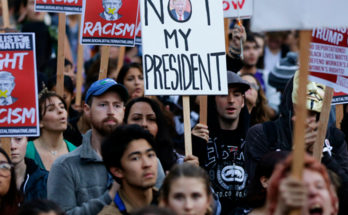Despite the proletariat cover story, the leading women’s rights hashtags of our day are entirely fronted by media and entertainment industry very important persons. It’s simply a matter of who has the ear of newspapers, magazines, television, and social media. A brilliant woman who has never starred in a popular CW series and has but 197 followers on Twitter is like the proverbial tree falling in the forest. While a woman whose trite slogans are shared and liked at mock speeds around the world wide web holds undue influence, power, and leadership roles in her selected cause of the day. The medium is the message. Don’t quote me on that.
Do you remember what happened to those minority civil rights activists invited to the Golden Globes by a series of wealthy white female actresses? You don’t. Nobody does. They vanished like so many dissidents into a Pinochet-era soccer stadium. Meanwhile, Emma Stone continues to Tweet her mind’s eye directly into the HuffPo and Cosmo consciousness. It’s not fair, but to be fair, it’s always been this way, only the platforms have changed.
The “gender pay gap” issue ranks routinely near the bitter core of the Themysciran island oppression mythology. The phrase is extremely popular to utter among leading female politicians and their more attractive and far more slender cohorts in Hollywood. Arguing the accuracy, or even the mere existence, of an actual gender pay gap is a task for people who thrive on endless conflict. It’s a Freshman college economics class debate filled with convenient stats, broad assumptions, and an incredible amount of partisan bias rendering every discussion a matter of apples and oranges. For a number of years, gender activists and mindful politicians unapologetically pushed the “women make 78 cents on the dollar compared to men” line. The number was derived from a tortured calculus that as easily could’ve concluded that working women are largely compensated in garbanzo beans and lobster bibs and the world simply isn’t aware of the horror. It’s the fiction of stats. Like those 27% of men in surveys who claim they never masturbate. Trust me, you only know the other 73%.
Even the hardened activists pushing this “78 cents” line have subsequently updated the discrepancy figure multiple times to the point that they seem to have settled on around “88-90 cents” on the dollar compared to men. That nominal figure makes common sense. As in, in a longitudinal examination, a random woman who starts in Marketing at random company will earn 90% of what a random man who starts the same time in Marketing at the same random company will over the next decade. Legitimate researchers will pin the delta on the fact that women tend to change jobs and companies more often than men, take maternity leave or even drop out of the workforce for a period of time to care for children more often than their male counterparts, and the fact that women are less aggressive compared to men in demanding raises or promotions. The net result, Betty earns 90% of Bob over the same ten-year period, despite their equal skill set and commitment to birthday cake celebrations at the office.
Feminists will either blanket deny these rather obvious reasons for career pay differences and point to an insidious patriarchal conspiracy, or, accept that these are the reasons for the pay gap and decry their inherent sexism. And they are sexist, by definition. In the same way that the NBA employing no female basketball players is sexist. A situation that exists because nobody has figured out a remedy that doesn’t decimate a perfectly successful and crowd pleasing multi-billion dollar industry. Don’t bring up the WNBA. That’s beneath you.
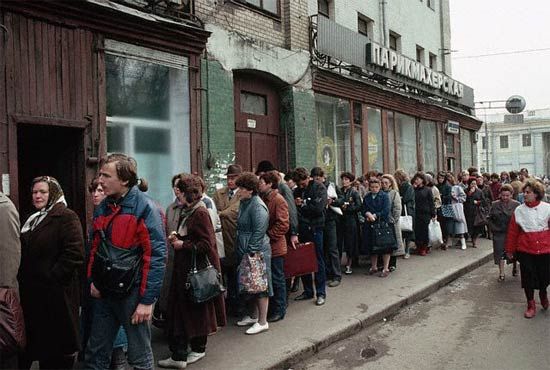
Therein lies the rub with equality of outcomes: you can never get to a happy place by punishing successful people and rewarding less successful people in the name of fairness. The end result is always toilet paper shortages. While you’re wiping your bottom with graph paper you found mercifully tucked in your second grade Pee-Chee folder, you can covet those living in a meritocracy with all the two-ply they could ever desire. In both models, somebody gets the shaft, but only one of the models offers those at the bottom a logical explanation and a chance to improve.
What’s left to do in the absence of a real solution is a fake solution. Corporations and governments have been perfecting fake solutions for eons on end. That’s why Budweiser keeps running commercials telling you to drink responsibly. Alcoholism solved. Budweiser goes out of business. Fire your ad agency. Just kidding. They’re doing fine. Wink wink.
Countries like Iceland are heralded for blanket regulations that insist companies pay men and women the same salary regardless of their isolated worth or performance. Presumably the pay for men will be based as it has been on their productivity and value to the company while women will now be paid based on what the men make. De facto, women will receive a pay raise. Some will deserve the raise; some will not deserve the raise. This is the cost of ensuring equality of outcomes. Turning all private enterprise into a public teacher’s union pay schema. Naturally, the higher costs will be passed along to customers, half of whom will be women, but logic trees are not the friends of politically driven economic policy. The goal is not to verify the problem; it’s to appear to be fixing it.
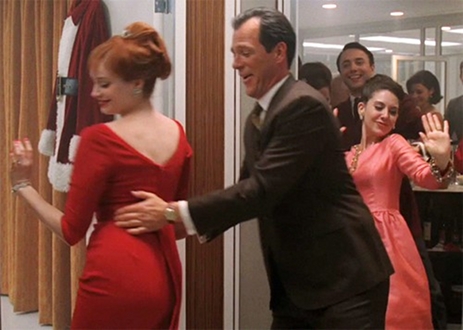
Companies that fancy themselves progressive or simply wish to appear so are now reviewing hiring, salary structure, promotions, and other HR policies to find the bugaboo in their existential mainframe that has caused them to be so biased against female employees. Imagine in-house seminars where employees are being forced to watch Mad Men episodes while the new Chief Diversity Officer peppers words like “misogyny” and “sexism” about the conference room. Don’t ask for cookies. There are no cookies in hell.
(It’s worth a moment to re-admit into evidence my oft-cited argument that the bulk of benefits of the women’s movement funnels to professional, college-educated, white women. That demographic represents the fastest growing economic sector in our nation, and not by happenstance, but by writing themselves a sweet carve out in Federal law when none was originally intended for Caucasian females. Minority women tend to take the practical brunt of what gender bias differentials exist, in part because those toward the lean end of the socio-economic scale, both men and women, are more likely to suffer injustices without recourse. The word “disenfranchisement” isn’t meant to connote good times. White women are far more represented in the female pool advancing steadily in four year college diplomas, advanced professional degrees, senior management promotions, and real wage growth and economic and political power. Not to mention they own Twitter. Black Twitter is more fun, but it’s not shaping the modern media landscape and daily news reporting like heavily followed white women with hashtags. In short, much of the remainder of this piece has little to do with women of color, who, on the whole, still receive lesser treatment in our current system.)

When discussing affluent jet setters who eschew gold bullion for the preferred currency of gender oppression, look no farther than Hollywood. Ills, real or imagined, inevitably find their highest heights behind the high walls of gilded Brentwood estates. If you can imagine that under-confident kid in middle school who had to top everybody else’s stories with some fictitious account of his even greater daring-do’s, then you have an idea how female celebrities conduct themselves in relation to the existence of sexism in the world. By sheer coincidence, harassment, abuse, bias, discrimination, conspiracy, and exploitation of women exists in Hollywood in greater measure than any where else in the world. It’s hard to reconcile how the women who own the designer purses suffer more from sexism than the underage indentured servant girls who hand-stitch those bags in Southeast Asia, but it’s true. How else to explain the prolific number of commissions, initiatives, and front-page stories outlining the horrors of women in Hollywood when the girls of Myanmar make merely a peep. Their silence speaks volumes. They must be happy.
The women of Hollywood have eaten up the bulk of the total noise in the gender pay gap debate. Half of them are currently in the third stall from the right forcibly regurgitating their excess. While the well-to-do of entertainment and media mighty tearfully cite sexual harassment in the bauxite mining camps of Eastern Europe, that’s for show. The self-centered masquerading as do-gooders are not moved by the suffering of Slavic women who can’t be bothered to wax their anuses. Look closer to home. These wealthy ladies are being paid less than their male co-stars and they’re pursed lip shouting it from the rooftops during post-Botox injection stasis repose.
One of the more prominent stories in the Hollywood gender pay gap saga came from Jennifer Lawrence. After one of the Kim Jong’s hacked and exposed all those Sony emails back in 2014, Lawrence learned that she had been paid less than her male co-stars on the film, American Hustle. News outlets like The Daily Beast which can’t cover enough stories of protected category oppression, tracked Lawrence’s response like first alien contact. Easily discarded was the fact that Amy Pascal ran Sony at the time and signed off on everybody’s compensation. Pascal later blamed a patriarchy so powerful they cleverly put her in charge of the entire studio merely to psychically control her into gender biased pay decisions. Kind of weird, but who can disprove the truly ludicrous? Eternally perplexing.
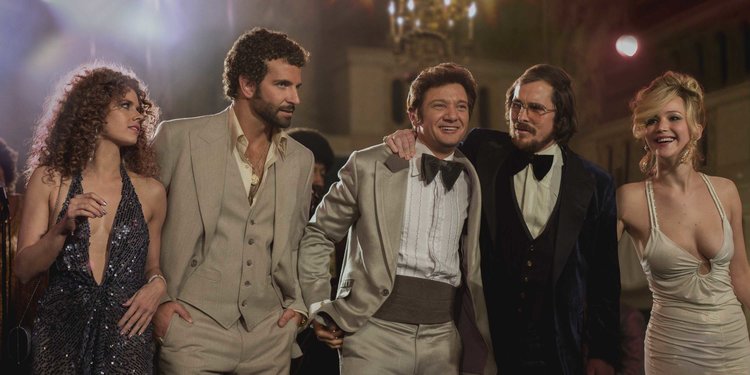
Leaked emails showed that Bradley Cooper, Jeremy Renner, and Christian Bale, all got 9 points in the backend profit pool for American Hustle, while Amy Adams and Jennifer Lawrence received 7 points. Articles decrying the differences noted that Jennifer Lawrence was the biggest star among the entire cast, ergo, was blatant sexism. Though despite referring to Lawrence as “post-Hunger Games Lawrence” nobody could objectively prove this supposition, nor could they explain why even if this was true, she and her agents settled for less than Cooper and the others.
It’s worth considering that Bradley Cooper got into the film game ten plus years prior to Lawrence, and at the time of American Hustle, had already starred in all three Hangover movies, and been cast as a lead or co-lead in multiple big budget films including the wretched A-Team reboot. Jeremy Renner had already been nominated for an Oscar for Hurt Locker in 2008 and was featured in recurring Mission Impossible, Marvel, and Bourne films. Bale was a well-established and long-time kid actor turned adult actor coming off back-to-back roles as a very successful Batman.

Lawrence was coming off her successful introduction in the Hunger Games hit, but American Hustle and the second Hunger games were slotted for the same late 2013 release, so she was “hot” in an up and coming way, but hardly established. Certainly not as established as she would be by 2015 when she became ridiculously well paid for her Hunger Games sequels and other films, pulled in tons of women’s lifestyle and beauty product endorsement deals not available to men, and shot past the $100 million in net worth by age 27. This is really your case study in Hollywood gender pay gap woe? Sorry, did I say that out loud?
A completely objective hindsight at the Lawrence-Sony case would indicate that a feeling existed that actresses could be paid less than actors in feature films. Film is quite different than network television where female leads routinely equal or better male actors, though the cries of sexism still obviously must be bellowed across the kingdom, err, queendom. The origins of this “lower pay for actress” sentiment remain quite in dispute. Of course, there is the devious patriarchy and misogyny of things, even when women like Amy Pascal are running the show. Also, and perhaps more supportable, there is an economic argument that male actors are worth more than their female counterparts at the box office. This isn’t always, but often, and men are therefore being paid more in accordance with their business bottom-line worth. This practical explanation seems far too logical to be dispute in empty fashion across social media, so it’s often completely omitted from all articles on the topic.
Lastly, there is a general sense in town that women will demand less to participate than men. This sentiment must be reconciled with the fact that all A-list talent contracts are being negotiated by the very same small handful of agents in town. Jennifer Lawrence isn’t represented by a millennial chick with ear gauges and a Coachella MDMA hangover. Nope, she has the same advanced team at CAA that represents Chris Evans and Gerard Butler. Why are they settling for less than market value for their client? Or is it the market value discrepancy that troubles people?
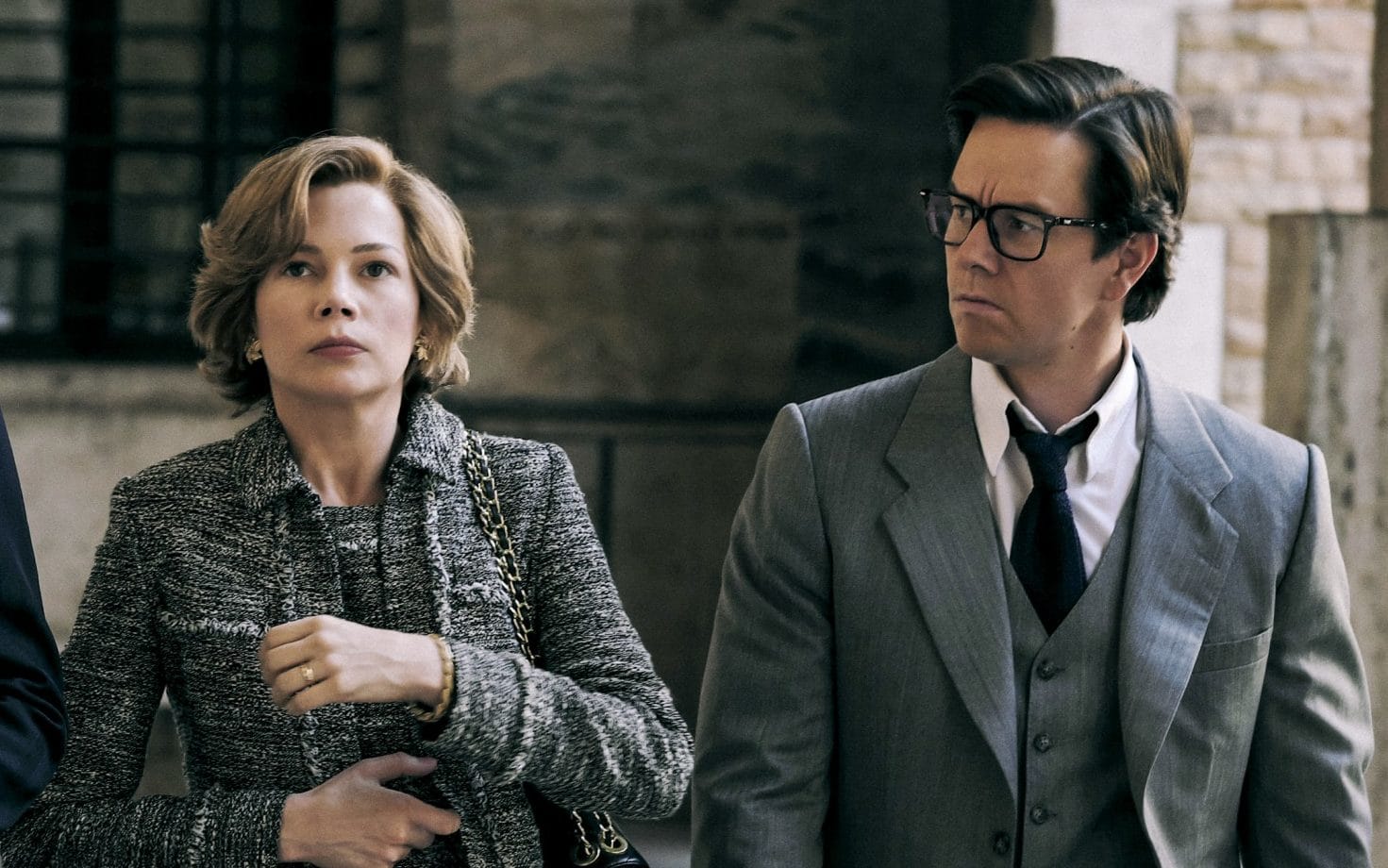
A similar situation arose recently with Michelle Williams, who agreed to re-shoot scenes for All the Money in the World for peanuts after everybody suddenly remembered that Kevin Spacey liked to sexually harass very young men. In contrast, Mark Wahlberg, who couldn’t act his way out of an imaginary paper bag, demanded and received a cool $1.5 million for his reshoots. You could explain it as crass sexism, or, alternatively, the fact that Wahlberg, for reasons only known to a cruel God, carries films to tremendous box office success. As such, he’s become the single highest paid actor in Hollywood, is highly sought after, and can command all sorts of amazing contract points. In contrast, Michelle Williams, while an infinite times the dramatic arts practitioner than Wahlberg, isn’t worth much to a film’s financial success. Michelle Williams is represented by the same agents at William Morris Endeavor that handle Ryan Reynolds. He’s paid in dump trucks full of cash. Why isn’t she? Is it possible these agents bring detailed analytical binders showing the economic worth of their clients to negotiation meetings? It is possible. They do.
Nevertheless, there was outcry from the public that matters when they assigned gross sexism as the only possible answer for the Michelle Williams and Mark Wahlberg pay gap. Wahlberg, having more money than Midas and being super Catholic and forever guilty about his teenaged race-related assault crimes, donated his $1.5 million paycheck to the Time’s Up movement in Michelle Williams’ name. Wahlberg was back in good graces as everybody agreed not to call this a gender hustle. The truth is not pretty, and best left to heaven.
Wahlberg opened the veritable floodgates of remorseful male gender pay gap thought criminals. Much like post-Weinstein when half of male Hollywood declared their own gender inherently gross and agreed to give female empowering films 100% on Rotten Tomatoes, the flood of male actors denouncing the gender pay gap came fast and furious. There was a race among leading and not so leading male actors to insist that this horrific Hollywood A-list gender pay gap be eliminated, such that it existed, or regardless thereof.

As an example, popular British actor, Benedict Cumberbatch, recently announced that he would not appear in any film where women were paid less than men. His statement came naturally without any explanation or practical detail. Cumberbatch added that he supports feminism and he’s proud that his production company has only two male employees, as not hiring men is apparently the commendable kind of gender discrimination. Cumberbatch insisted his company is going to make a slate of movies about women since his detailed research shows that women represent half of the population. He also applauded the diversity of Black Panther for no other reason than he’s white and it felt right. Platitudes may seem trite, but they’re the primary language of modern social activism.
When actors themselves are not coming forward to address perceived gender pay gaps among lead actors, the consistently outraged among those with Internet access are standing in as the voices of the righteous. Such as when online petitioners demanded that Matt Smith return all monies paid to him in salary in excess of Claire Foy in their first series run of The Crown. Protestors unapologetically suggested that since she was Queen and he but her consort, the wage differential was trebly obscene. Whether or not they could differentiate between fictional entertainment and real life remains to be seen, and these aren’t the kind of people you want to engage in follow-ups. Producers of the show immediately scrambled to cover their morality mea culpa bases, even knowing that Matt Smith came into the production with far greater name recognition than the unknown Foy, who is now taking lead roles in major motion pictures, a joy and compensation yield Matt Smith will almost certainly never know. They promised to make it right. An odd promise to make after caving on the basis of mob rule.
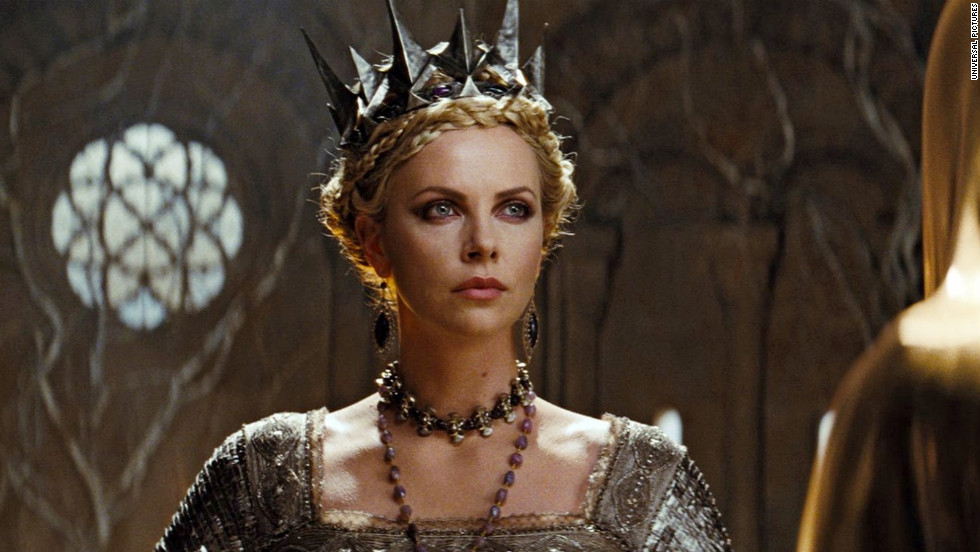
Amid the fallout from actresses like Charlize Theron having to ask for equal millions of pay to her male co-star rather than it simply being handed to her by fiat, is the total disregard for the true wage gap in the film and television business. If this libertarian leaning writer may raise his Marxian sickle for one shining moment, the most striking compensation differentials in Hollywood aren’t among and between dramatically compensated leading male and female actors, it’s between these high-priced handsome people and everybody else who works with them to produce popular entertainment.
Hollywood employs the financial terms “Above-the-line” and “Below-the-line” when budgeting for films and television shows. There is literally a line on budget sheets that separate the creative talent costs (actors, directors, writers, producers and their expenses) who are above the line from the production crew (props, set designers, editors, wardrobe, electricians, drivers, et. al.) whose wages are listed below the line. (The Smoking Gun has a bunch of leaked actual movie budgets if you’re interested to examine who gets paid what.) As Hollywood is a union town, most domestic productions are run with union crews with the compensation rates pre-established by workday. These union rates aren’t too shabby for most positions, and provide full-time workers with health and pension benefits. But they aren’t lead actor/actress rates. Not even several ballparks over. They are largely mid to higher five-figure annualized gigs depending on seniority, and depending on your ability to keep staffing onto jobs some of which may last only weeks at a time. Non-union rates offer less compensation and often no benefits; hence the preferred position of production companies ever looking for Latvian and Romanian landing spots for cheaper labor costs. Though guess who gets paid the same sweet green regardless of the less expensive foreign country of filming? The lead cast.

If you wanted a good laugh, you could pretend that acting talent labors as intensively and under the same working conditions as production crew. They don’t, excluding the mental anguish naturally involved in the emoting and counter-emoting process. If you’ve been to a film or TV set, you quickly pick up on the raucous pace of the production staff, complete with bitter chain smoking, recurring screaming, and incessant panic about schedules falling behind. It’s like any other stressful job where you bring a lunch pail and hope to live to see the whistle blow. In contrast, the actors sit in hair and makeup chairs, or in trailers reading magazines in between scenes. Certainly Tom Cruise will break a smaller bone the first week on any new Mission Impossible location shoot to prove his bona fides. But he’s the exception, not the rule. Also, he’s nuts about his tough guy image. For the most part, for acting talent it’s sitting and waiting and eating your carefully manicured organic lunch.
For your good looks and ability to recite lines, you are rewarded with 20-100 times the pay of the guy in the rafters slinging hot lights or the carpenter tasked with constructing a fake living room in four hours. It’s an outrage when a CEO of a Fortune 500 company earns at ridiculous multiples to their average line staff; not even a peep when it’s Jennifer Lawrence taking home 20 million for the underwhelming film Passengers, while the guy staying up seventeen straight nights in a row modeling the CGI spacecraft sets is making $20 an hour in South Korea and being told he can’t bill overtime if he wants to work again.

(For the record, Lawrence commanded $20 million for Passengers while male co-star Chris Pratt took in $12 million. The social justice klaxons mounted on the Hollywood sign somehow failed to fire upon this gender pay gap news. Forbes has an interesting take on the matter.)
If the goal is similarity of compensation between those who make film and television shows regardless of their correlation to revenue, or even regardless of their contract negotiation vigor, then why is it that a certain class of privileged workers are paid grossly more than those working longer and harder on the very same project? Do people born better looking or with more on-camera presence deserve many multiples more money than the burly woman who can expertly rig an electrical panel to handle high voltage lighting? I can tell you which one I’d want in my foxhole.
Calls for blanket equality of outcome are a tricky thing. You need a healthy dash of “for me, not for thee” to make it all square out in your favor. Whatever pay gap exists between male and female lead actors, such that you are certain it’s purely a result of patriarchal conspirers meeting in golf course locker rooms, pales in comparison to the gap between Above-the-Line and Below-the-Line contract and salaried employees of entertainment productions. Is Benedict Cumberbatch going to refuse to work on movies unless Key Grips are paid the same as he? What about those stunt people who keep getting badly injured or even dying for pennies on the dollar of the actors and actresses they’re doing the dangerous work for in action scenes? Is all this rancor and vilification really about the noble aspiration of equality at all?
This might be the time to consider the age-old axiom that listening to extremely privileged people bitch about inequity in the world is a massive waste of time and karma points. These rich and famous thespians have the megaphones and the sycophantic followers. And many have the keen ability to social bubble themselves right into the perfectly honed morally heroic response. But the fact remains, it’s a vanity scam. Bill Gates donates billions to battle contagious disease in Africa with but a pro-forma press release nobody reads. The lead cast of Big Bang Theory take $18 million a season on a TV show versus $20 million in order to fund secondary cast raises to $450,000 and they’re heralded as a distinctly more selfless versions of Mother Theresa.
There is injustice in this world, there are imperfect markets, and there are certainly attempts by ownership to exploit labor. Toward the bottom of the ladder, women and especially minority women, immigrants and other vulnerable populations are treated vulnerably. At the top of the ladder, the indignities are far more perceived than real. Who wouldn’t happily accept 90-cents on the dollar to somebody being paid $15 million for eight weeks of work on set in Toronto? Or be told, you can only make $500,000 for this film at 23, but if you can wait until 25, you’ll make more than the GDP of North Korea even for films that are noticeable box office failures? Recently, Ellen Pompeo thanked her Grey’s Anatomy boss for helping her negotiate her new $20 million + a season salary. Name a profession where your very own boss assists you into a fat raise. At some point, you become Marissa Mayer complaining about only receiving $183 million to exit Yahoo! after driving it into the ground while your unsuccessful male CEO counterparts are receiving in the low 200’s. Nobody cares. The human range of emotions does not include pity for those with seven homes and a private mountain range.
Picking and choosing which pay gaps are born of malicious intentions are which are a natural fallout from your mom having the foresight to get you into shampoo commercials at age five is a minefield of subjective principles. You may be worth several hundred times more than the people who handle your hair and makeup and wardrobe and food and training and drug rehab counseling. You may not be worth as much as Bradley Cooper at this time. You may feel like you’re the one being screwed in every situation, but trust me, you’re not. Those would be the male production assistants on the last twenty years of Kevin Spacey projects. Whatever they got paid, it wasn’t enough.



